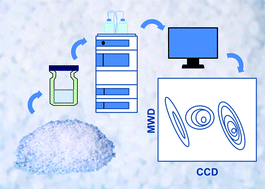Challenges in polymer analysis by liquid chromatography
Abstract
Synthetic

* Corresponding authors
a
Analytical-Chemistry Group, Faculty of Science, van't Hoff Institute for Molecular Sciences, University of Amsterdam, Science Park 904, 1098 XH Amsterdam, The Netherlands
E-mail:
p.j.schoenmakers@uva.nl
b Dutch Polymer Institute, P.O. Box 902, 5600 AX Eindhoven, The Netherlands
c DSM Resolve, P.O. Box 18, 6160 MD Geleen, The Netherlands
Synthetic

 Please wait while we load your content...
Something went wrong. Try again?
Please wait while we load your content...
Something went wrong. Try again?
E. Uliyanchenko, S. van der Wal and P. J. Schoenmakers, Polym. Chem., 2012, 3, 2313 DOI: 10.1039/C2PY20274C
To request permission to reproduce material from this article, please go to the Copyright Clearance Center request page.
If you are an author contributing to an RSC publication, you do not need to request permission provided correct acknowledgement is given.
If you are the author of this article, you do not need to request permission to reproduce figures and diagrams provided correct acknowledgement is given. If you want to reproduce the whole article in a third-party publication (excluding your thesis/dissertation for which permission is not required) please go to the Copyright Clearance Center request page.
Read more about how to correctly acknowledge RSC content.
 Fetching data from CrossRef.
Fetching data from CrossRef.
This may take some time to load.
Loading related content
